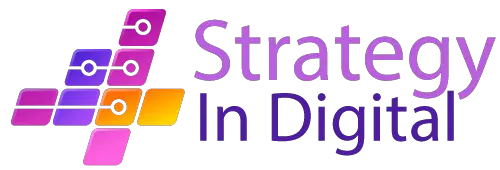Understanding the differences between relational and object-oriented databases is important to choosing the best option. Each alternative has its pros and cons and a specific one may best suit your business.
Work in medium and large companies is increasingly intertwined with digital technology. The main reason for this is the way organizations handle information on a daily basis.
Digital Marketing strategies represent a good example of this, as they are increasingly driven by statistics and data correlation rather than individual observation.
Therefore, different technologies and techniques are adopted in order to facilitate the capture, storage and retrieval of this information. The main example of this is databases, which can come in different formats depending on the size of the company and its methodologies.
Being different from each other, each option also has its own characteristics that must be taken into account before implementation.
What are databases?
Before talking about the difference between relational and object-oriented databases, it is important to establish a better definition of what a database is.
Simply put, it is an information storage system, which has some correlation with each other. This correlation can be a direct association, classification, categorization or other type of logic.
The idea is to facilitate the organization of this information, as well as its daily applicability.
Databases are used in all types of procedures in companies, especially in registration and customer service. In this way, the service can better adapt to your audience, in addition to being more agile.
How does a relational database work?
Once you understand the basics, it will be easier to know the types of databases.
Relational databases are based on the relationship between information and different factors. In practice, you can see it as a table, where each column represents a type of information associated with a row. Each of these rows and columns is called a key.
The first column usually represents a primary key, which will serve as the basis for identifying the row. Each primary key must be unique, avoiding the mixing of information. This means, for example, that two customers cannot register under the same name, but can register in the same city.
What is an object-oriented database?
Alternatively, an object-oriented database is organized in the form of different objects, which contain grouped files and information, as well as procedures for reading and processing them.
Unlike the relational model, it does not follow a rigid pre-established “logic”, creating only blocks of information, each with an associated Object Identifier.
If the first example was viewed in table form, this is presented as a series of boxes with individual labels. There is no direct relationship between the location and its content, it is necessary to locate the object/box you are looking for to find the information contained in it.
How are their characteristics different?
Much of the difference between relational and object-oriented databases is technical, not always visible to the end user. However, from a technological and especially a management perspective, it is important to recognize how each format handles data and how it fits into your context.
Some of the main points in which these types of databases differ are:
Storage structure
This is the fundamental difference between the two. In a relational database, each individual information is stored as a separate file, independent of the others, and there is no support for persistent storage of objects with a complex structure.
The focus is on more direct data.
Object-oriented databases use identifiers to label each object, along with indexing techniques to locate pages on disk. As a result, the system can support more complexly structured objects.
Information retrieval method
For your data to be effectively useful, you also need an effective recovery method. Without this, it will not be practical to apply them in day-to-day decision making.
An object-oriented database, as we have already mentioned, uses object identifiers, which are like labels.
When you search for one of these tags, the system brings up the set of files and information it contains. And, within that object, there may be other types of hierarchies and internal relationships.
The relational model, in turn, makes use of two relational keys. The primary, as already mentioned, is the base, generally represented in the first column of the table, which identifies each row. Then a foreign key is used, which is related to the primary one. Together they serve as a coordinate to locate the information sought.
Likewise, there may be secondary or tertiary keys, which act as search filters. In this way, it is possible to use other keys and separate those that have specific information in a certain area or those that have an empty area.
Data complexity
Another difference between relational and object-oriented databases is the volume and complexity of information that each imposes. Although the volume itself is only limited by hardware, there are still some features to consider.
An object-oriented database, which has fewer structural restrictions, can contain much more information and in greater variety. This results in a more flexible data system that copes with multiple file formats, for example.
A relational database, on the other hand, contains a lower level of complexity, resulting in a relatively smaller volume of information.
Restrictions
Different systems may also impose different restrictions on their structure, as well as the way this data is manipulated. Additionally, you must evaluate the restrictions when assigning permissions and ensuring the integrity of the information.
Object-oriented databases have a wide variety of permissions and restrictions depending on the system, making it impossible to generalize. On the other hand, relational databases have keys, referential integrity, and entity integrity imposed as part of their method.
Data manipulation language
Computers and people transmit information in completely different ways. Humans use words and language, while computers use binary code. In this way, the programming language is a middle ground between the two, which is also used for data manipulation.
In object-oriented databases, manipulation is incorporated directly into the programming language used, for example, C#. Therefore, at least a basic knowledge of the programming language is needed to manipulate it.
A relational database, on the other hand, includes its own language to manipulate its information, such as SQL, QBE or QUEL. This somewhat lowers the barrier to using this system more efficiently.
Data variety
Finally, there is the issue of the variety of information. Depending on the content of the database, it may be necessary to include files in multiple formats and with different types of information at the same time.
As we have already mentioned, this is a big difference between relational and object-oriented databases. The former is capable of handling only one type of information at a time, while the latter can encompass multiple types of data simultaneously.
This is something that also influences the volume and complexity of information that each system can contain.
Which one is better for you?
After understanding the difference between relational and object-oriented databases, the next step is to analyze each one and evaluate which one best suits your company. A not so simple decision, taking into account that there are a large number of factors that can affect it.
To help you make the best decision, below you will see some criteria that you can base it on and how they favor one or the other.
Investment level
One of the first things to consider is the level of initial and ongoing investment needed to keep a database running.
Regardless of expected performance, you must have the time and resources initially available for these activities to begin. Otherwise, you won’t be able to get much benefit from the investment.
In terms of infrastructure, the cost varies more depending on the system and size of your company than the method used. Hardware and software specifications are not always consistent, so you’ll need to make adjustments and change your schedule based on the type of deployment you want to do.
Data transmission consistency
In some cases, the company’s priority is to ensure the reliability of the information in its database. Especially when long-term data analysis and recovery is needed. A longitudinal study, which can take several years, is much less reliable when your system cannot keep all the information consistent over time.
One of the strongest points of a relational database is the greater guarantee of control over the transmission of information. And because it has a stricter organization scheme, it is also easier to recognize and categorize all the data collected.
An object-oriented database, on the other hand, does not have such a rigid structure. While this increases your flexibility, it is also a disadvantage when it comes to consistency. Identifiers need to be closely monitored to ensure that the information is easily retrievable.
Multiplicity of data
Another point that we have already mentioned about the difference between relational and object-oriented databases, but that should be reinforced, is regarding the variety of files and data that each one supports.
A factor that makes a big difference in the usefulness of the system. For some projects, the database only needs small text information or links, which can be easily entered and organized in the relational model. Each one corresponding to a primary and foreign key.
However, the same model does not support different file types, which may make some projects difficult or require parallel solutions.
An object-oriented database, on the other hand, can group different file types within the same block.
This is great in marketing projects, for example, where customer and partner data can be associated with images, corporate videos, and other file types.
Initial preparation time
Last but not least, you must take into account the stage the company is in and how quickly this database must be implemented.
In businesses that follow an agile methodology, for example, they can establish and delete new databases in a short time, requiring something easier to build and manage.
A relational database is usually not the best option at this time. In the long run, it may be safer and more efficient, but it takes longer to structure correctly. Object-oriented databases can be implemented quickly, being most effective in the short term.
Now that you better understand the differences between relational and object-oriented databases, you can evaluate your options and choose the one that best suits your work.
In Big Data-related tasks such as marketing strategies and website management, small differences in performance can become much larger.
However, in addition to efficiency, you also need to think about data security. If you want to learn more, also see our article on what hackers do to break into website databases.








